Viburnum
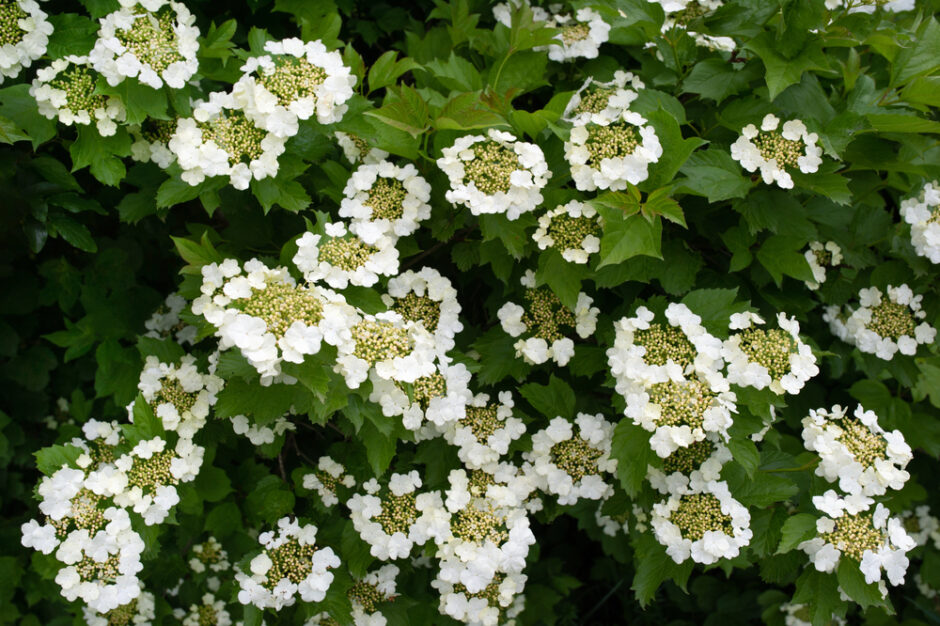
Viburnum are a useful group of evergreen and deciduous flowering shrubs. Some flower on bare wood, and in different seasons. Viburnum opulus is deciduous and is a wild native, common in hedgerows, Viburnum davidii is evergreen and makes little mounds, Viburnum tinus is evergreen and makes a decent hedge, Viburnum bodnantense is deciduous and flowers in the winter. There is even one commonly called the Snowball Tree.
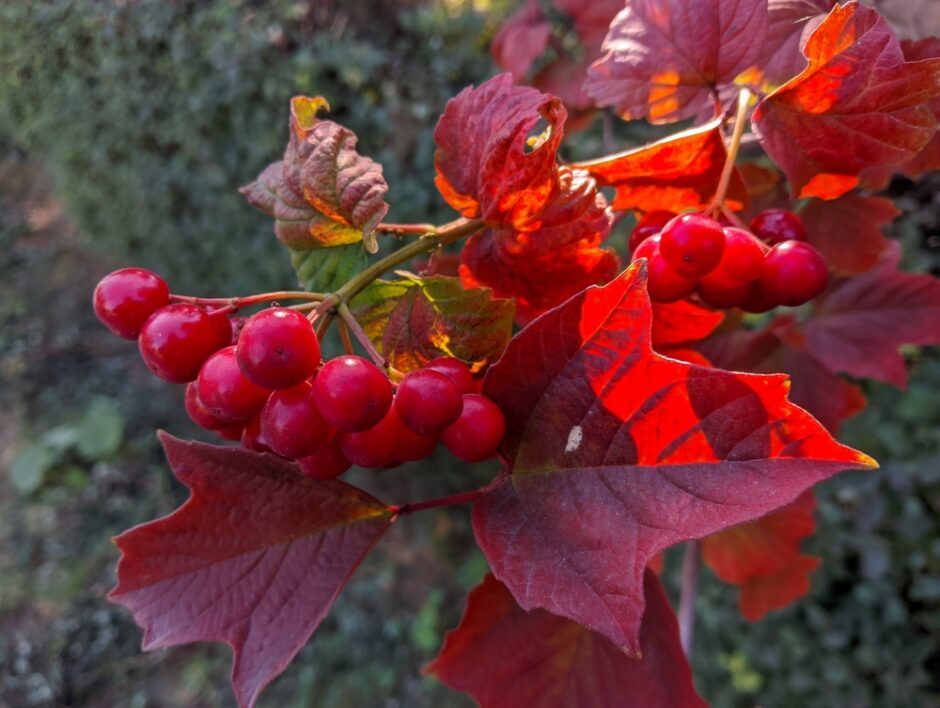
The image at the top is of Viburnum opulus – the Guelder Rose – in flower. And this image is of the berries which follow on, and the typical autumn leaf colour which it can produce immediately before leaf fall.
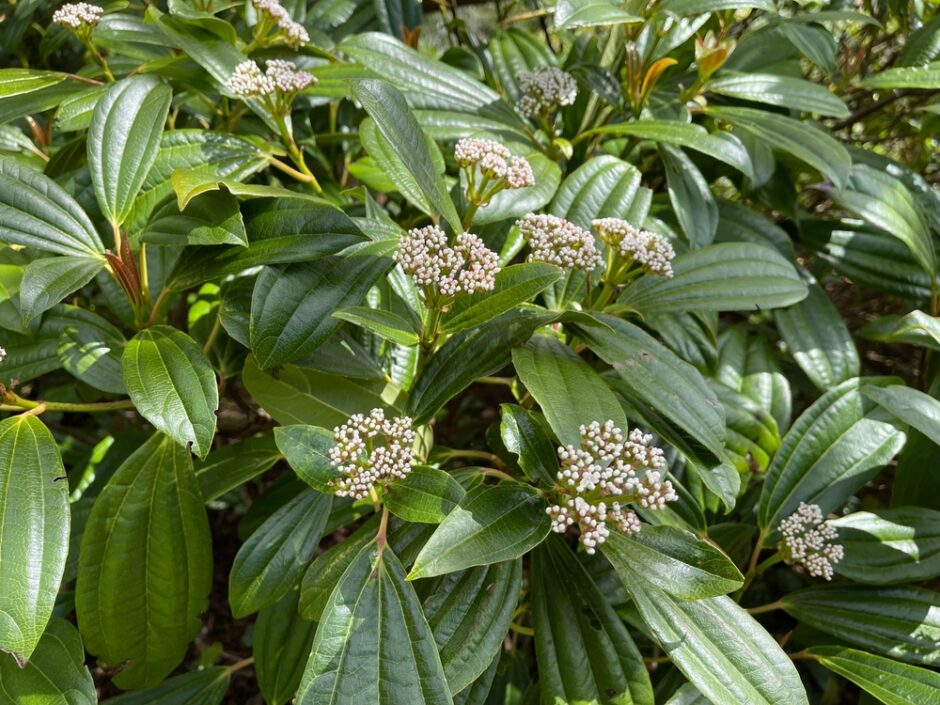
This is the evergreen Viburnum davidii in flower. They make only a compact mound and should be planted in groups of three as a minimum because they are either male or female, so such action greatly multiplies the chance of producing the turquoise blue berries.
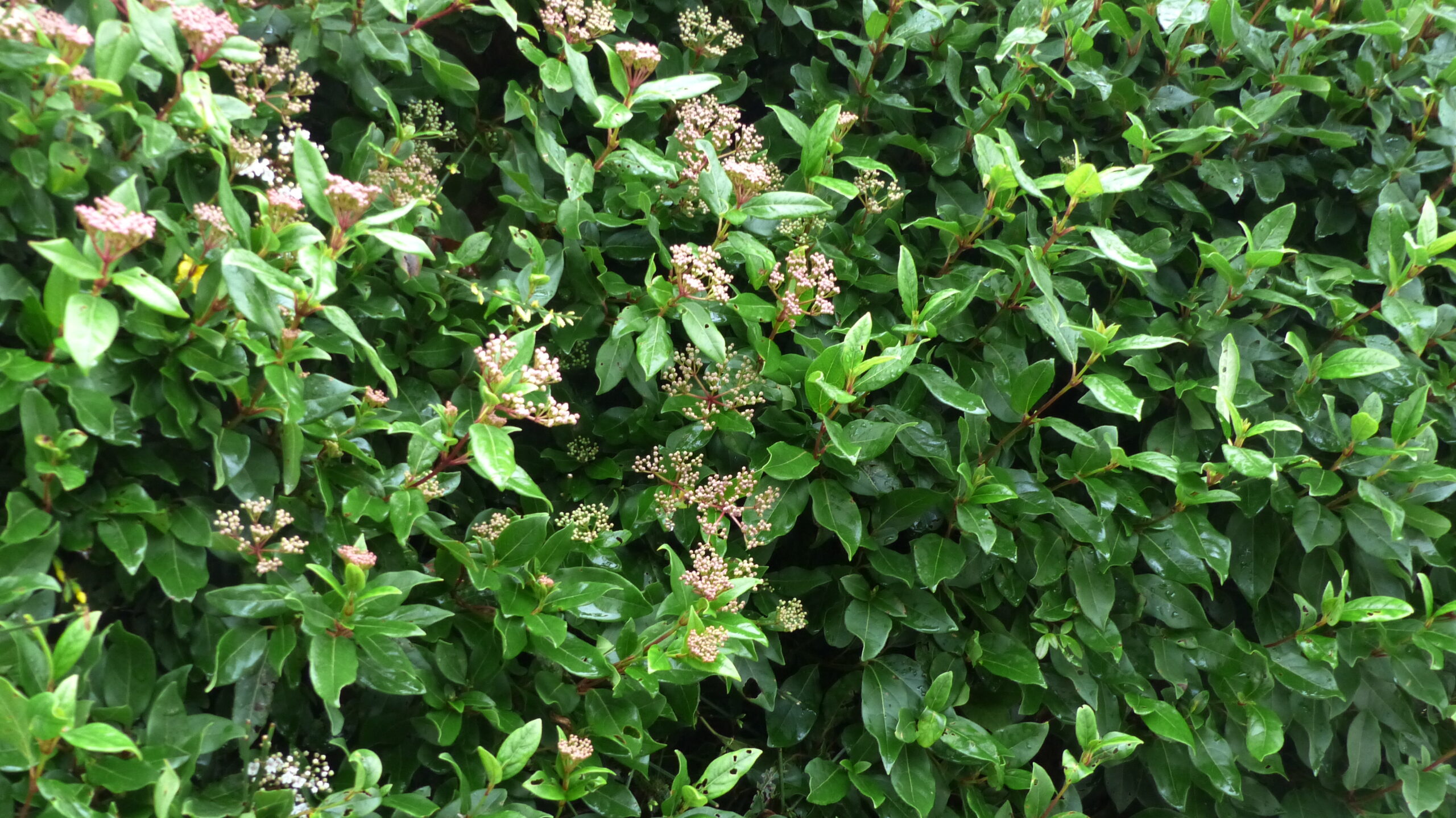
Viburnum tinus, the often-called “Laurustinus” is evergreen, producing flattened Cymes of white flowers which are pink in bud, from late autumn to early spring. A great winter-flowering shrub which makes a good informal hedge and does well in all but the coldest of locations. Tried and tested as it’s been in Britain since the 1500s.
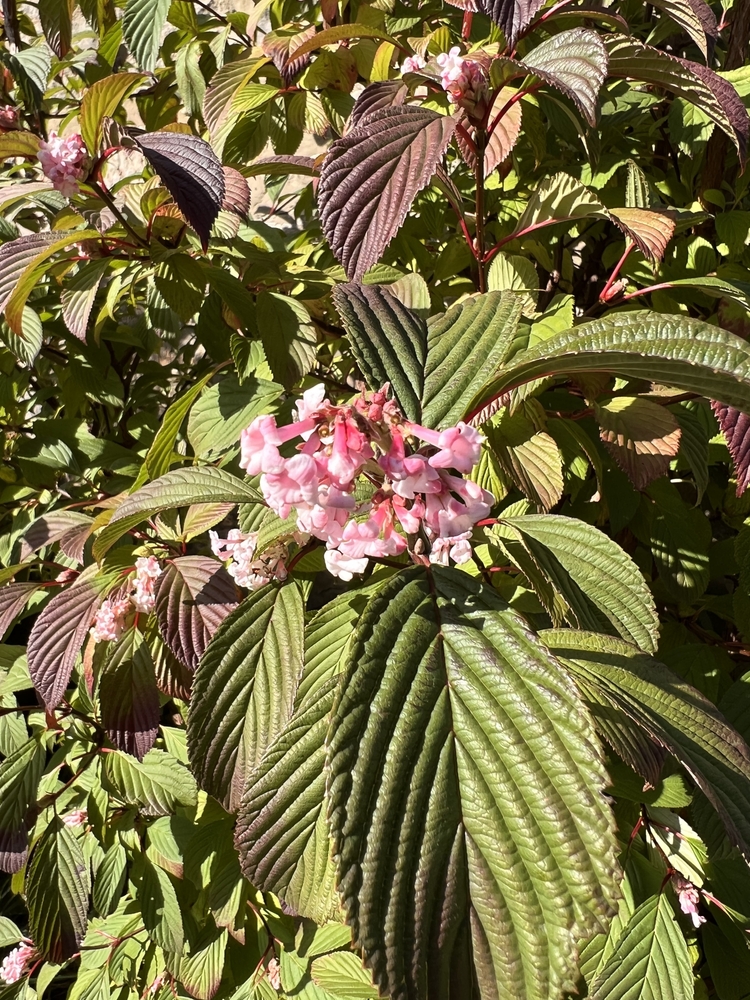
Viburnum x bodnantense is a deciduous shrub that is capable of growth up to 3M. Flowering on bare wood in the winter and hanging on whilst the shrub comes into leaf. The shrub gives off an interesting ‘nutty’ scent when being pruned. The variety called ‘Dawn’ is a reliable favorite.
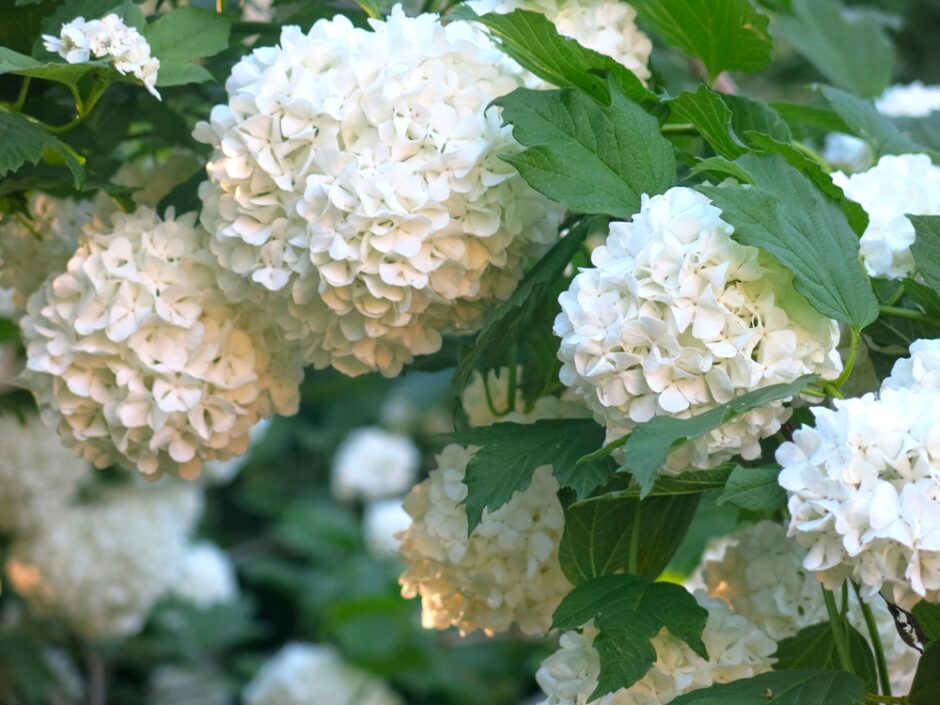
And this is the “Snowball Tree” – Viburnum opulus ‘Sterile’. Gets quite big and the leaf is prone to insect attack. But it’s unrivelled show of large green/white flowers is well worth the effort.
